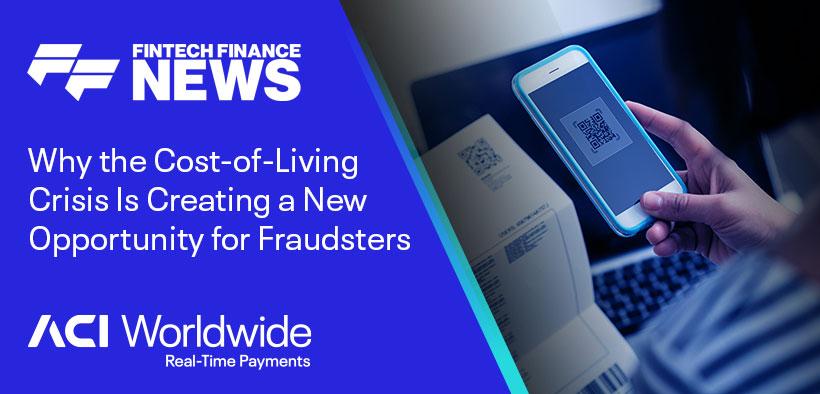The Fintech Forecast is a series of guest articles published each month by thought leaders at ACI Worldwide.
Author: Elise Thrale
Constant advances in fraud prevention software are necessary to protect consumers’ funds, as cybercriminals continue to adapt to new defences introduced by banks, merchants, acquirers and processors. It’s a game of cat and mouse. The aim of the game? Find and exploit the vulnerable link in the defence chain.
Innovative technologies like machine learning have been deployed to outsmart humans by using past data to predict fraudsters’ activities, which works for the most part. But the pandemic made consumers vulnerable to economic instability – in turn creating a gleaming opportunity for criminals to exploit. Now, in the midst of the cost-of-living crisis, criminals are not hesitating to exploit the weakest link in the chain – the consumer.
“Impersonation scams are the most lucrative way in which fraudsters have been able to adapt.”
Evolve or lose: How fraudsters are adapting
Firstly, lets look at how fraudsters are adapting to stronger fraud defences to exploit the human link. Traditionally, fraudsters have gone down the route of unauthorised fraud methods, in which – according to the Federal Reserve’s Fraud Classifier model – the fraudster uses an instrument, such as making an unauthorised payment with a card, or taking over the consumer’s account. Unauthorised fraud depends on finding a weak link in the defences of the consumer’s account, such as a weak password, or hacking systems to find a crack in the defences.
On the other hand, authorised fraud or scams are classified as manipulating the account holder in some way – be that creating a relationship with them, impersonating a third party, or selling a false product or service. This is known commonly as social engineering.
A new environment for new fraud methods
Impersonation scams are the most lucrative way in which fraudsters have been able to adapt. UK Finance reported that in 2021, £583m was stolen from UK consumers through authorised methods, £214m of that being through impersonation scams.
During pandemic-induced national lockdowns, consumers turned to eCommerce for purchases, while governments responded by supporting citizens with COVID-19 relief packages. Fraudsters found citizens’ vulnerability to be the weakest link and sent false delivery texts with malicious links to consumers, asking them to pay for their package to be delivered safely. The same was done with relief packages, in which fraudsters impersonated governments and asked for bank details.
In more recent months the cost-of-living crisis, caused in part by economic sanctions on Russia, has seen a rise in household outgoings when paying for essentials such as food and energy bills. The UK alone has seen annual inflation rates at an eye-watering 40-year peak of 9.4 percent. Many countries have introduced relief schemes to assist consumers in paying heating and fuel bulls. This has created a new opportunity for scammers to target those that owe energy suppliers, by impersonating debt collectors, or government relief programs.
“Criminals frequently use social media to target consumers with ads to make money fast”
The rise of money mules
Due to the increased cost of living, and consumers having to reach further into their pockets to pay essential bills, they are vulnerable not only to scams but also to being recruited as money mules. The money that a fraudster has scammed from a victim makes the journey through the account of a money mule. Criminals frequently use social media to target consumers with ads to make money fast. Typically, they could convince someone to unknowingly put £1000 of illicit funds in their account by letting them keep £100. Often it is the money mule who is caught and not the fraudster.
When can we put an end to the game of cat and mouse?
Fraudsters continue to adapt to weaknesses exposed by the world around us. Everyone, even the most tech-savvy generations, are at risk. Where there is less regulation around scams and authorised fraud, compared to what exists currently for unauthorised fraud, consumer education and being vigilant are just the first step to filling the gap. Stopping scams will be a global, cross-industry effort, which is only just beginning.
Credit: Source link





















